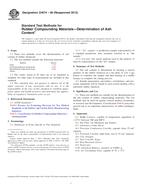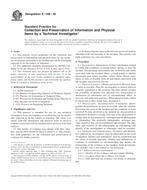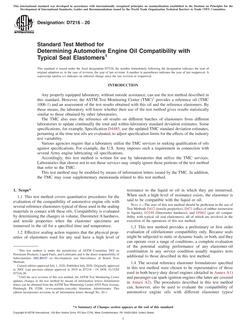1.1 This practice covers the preparation for analysis of waterborne oils recovered from water. The identification is based upon the comparison of physical and chemical characteristics of the waterborne oils with oils from suspect sources. These oils may be of petroleum or vegetable/animal origin, or both. Seven procedures are given as follows:
|
|
Sections |
|
Procedure A (for samples of more than 50-mL volume containing significant quantities of hydrocarbons with boiling points above 280°C) |
8 to 12 |
|
Procedure B (for samples containing significant quantities of hydrocarbons with boiling points above 280°C) |
13 to 17 |
|
Procedure C (for waterborne oils containing significant amounts of components boiling below 280°C and to mixtures of these and higher boiling components) |
18 to 22 |
|
Procedure D (for samples containing both petroleum and vegetable/animal derived oils) |
23 to 27 |
|
Procedure E (for samples of light crudes and medium distillate fuels) |
28 to 34 |
|
Procedure F (for thin films of oil-on-water) |
35 to 39 |
|
Procedure G (for oil-soaked samples) |
40 to 44 |
Product Details
- Published:
- 12/15/2017
- Number of Pages:
- 8
- File Size:
- 1 file , 220 KB


